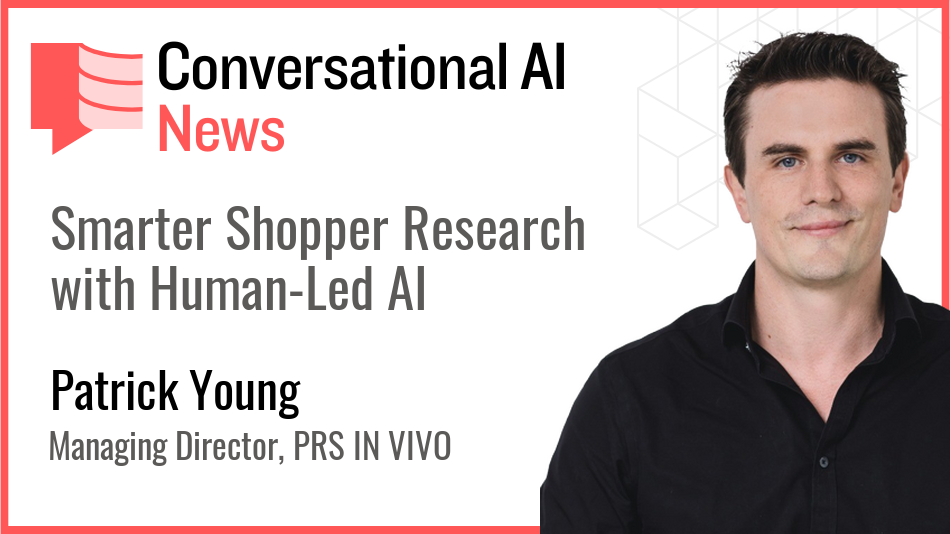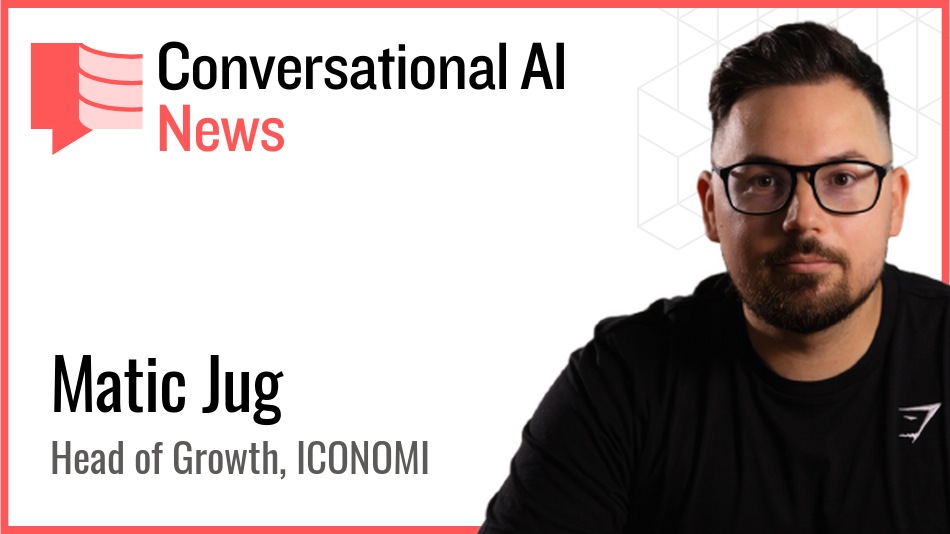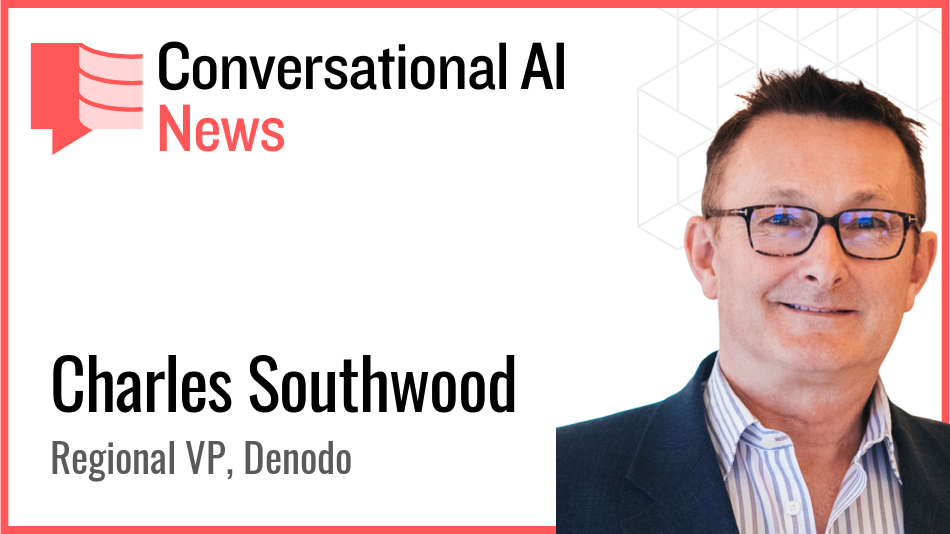Driving Smarter Shopper Research with Human-Led AI, by Patrick Young of PRS IN VIVO

Today we're meeting Patrick Young, Managing Director at PRS IN VIVO. They specialise in research consultancy in packaging, shopper experience, and new products testing rooted in behavioral science.
I wanted to get Patrick's view on how they're leveraging AI to drive better shopper research.
Over to you Patrick - my questions are in bold:
Who are you, and what's your background?
I'm Patrick Young, I studied Psychology at university, which sparked a long-standing interest in why people behave the way they do, especially at the moment they make choices. That question has shaped my entire career.
I've been fortunate to work across multiple sectors of the research industry. I worked in brand and communications at Millward Brown, where I learned how advertising shapes memory and meaning. I then moved into strategic consultancy at Kadence International, eventually becoming Deputy Managing Director in Singapore, helping multinationals navigate growth across Asian markets. Today, at PRS IN VIVO, I lead a business focused on shopper behaviour; the moment when everything from strategy to execution is put to the test. Along the way, I've worked in London, Sydney, and Singapore, giving me a genuinely global perspective on how people make decisions across cultures and contexts. That diversity of experience helps me bridge the gap between insight and impact; something I think the industry needs now more than ever.
What is your job title, and what are your general responsibilities?
I'm Managing Director of PRS IN VIVO UK, and I also sit on our Global Board. My role is wide-ranging; I lead the UK business commercially and culturally, oversee global initiatives in innovation and marketing, and contribute to our broader growth strategy. In practical terms, that means I'm often shifting between pitches, team development, product innovation, and strategic planning. I also spend time with clients, understanding their needs and helping to shape research that delivers commercial clarity. Our internal motto is 'raise the bar', and that drives a lot of how I lead.
Can you give us an overview of how you're using AI today?
We're applying AI to make packaging research faster and smarter, not to replace human insight, but to accelerate and augment it. Our focus is on improving decision-making at the early stages of pack development. We use AI to simulate visibility and attention at the shelf, helping clients understand which pack elements drive standout. We're also testing synthetic environments that allow rapid screening of dozens of designs. On the language side, we use large language models to deconstruct and analyse respondents' comments and have genuine, in-depth conversations at scale. This isn't about shortcuts; it's about giving our clients a speed advantage while keeping the behavioural lens intact.
Tell us about your investment in AI? What's your approach?
We've taken a pragmatic "build and partner" approach. We're not trying to compete with tech platforms; we focus on how to apply technology meaningfully in our field. We've invested in R&D to adapt AI tools to shopper research, built internal prototypes for early-stage design testing, and partnered with tech providers to scale that capability. Just as important, we've invested in upskilling our researchers, ensuring they understand how to prompt, challenge, and interpret AI outputs within the behavioural context of what we study.
What prompted you to explore AI solutions? What specific problems were you trying to solve?
The problem was speed. Our clients needed answers faster than traditional methods could deliver, especially during iterative design and innovation cycles. We needed a way to give directional clarity within days, not weeks. AI gave us the ability to test more concepts earlier in the process, simulate behavioural responses quickly, and identify potential winners, or failures, before investing in full-scale research. It's given us a new gear in how we operate.
Who are the primary users of your AI systems, and what's your measurement of success? Have you encountered any unexpected use cases or benefits?
Our researchers are the primary users. They integrate AI into their workflows to analyse shelf impact, mine shopper sentiment, and analyse large data sets. We measure success in terms of client time saved, clarity gained, and how often early AI signals align with later full-scale testing. One pleasant surprise has been how well AI complements our other research tools. These involve large, in-person testing in our Retail Labs, one fear would be that AI would replace this need, but actually, AI helps filter down the options making clients more confident about what they will take into the Retail Lab for validation.
AI doesn't give you answers,
it gives you a starting point.
What has been your biggest learning or pivot moment in your AI journey?
The biggest learning has been that AI doesn't give you answers, it gives you a starting point. The real value comes when you combine machine-generated insights with the behavioural expertise of researchers who can interpret and stress-test them. We see AI as an accelerant, not a solution. That framing has helped us integrate it more responsibly and effectively.
How do you address ethical considerations and responsible AI use in your organisation?
We take a deliberately human-in-the-loop approach to responsible AI, using the 10-80-10 rule. The first 10% is human; shaping the brief, crafting the prompt, and setting the right behavioural context. Then AI supports the middle 80% of execution, where speed and scalability matter most. But the final 10% is human again; tailoring outputs, applying judgement, and ensuring quality.
This structure ensures that AI is an accelerator, not an autopilot. We're also transparent with clients about what's machine-assisted, and we avoid any use of AI in personally identifiable or sensitive contexts. Responsibility isn't just about governance, it's about maintaining the integrity of the thinking at every step.
What skills or capabilities are you currently building in your team to prepare for the next phase of AI development?
We're building AI literacy into our researcher development; from prompt writing and visual interpretation, to understanding model limitations and hallucination risks. Our next phase is about integration; embedding AI more seamlessly into proposal writing, design diagnostics, and claims development workflows, without losing the behavioural rigour that sets us apart.
If you had a magic wand, what one thing would you change about current AI technology, regulation or adoption patterns?
I'd love an AI that could be both a thinking partner and Napoleon's Idiot, and switch between the two on demand. There are moments when you want AI to act like a true colleague, with full awareness of your past projects, brand context, strategic nuances, and client history; something that can make connections across everything you've ever worked on and suggest the next best step. That kind of continuity could create incredible value, especially in an insight-driven business like ours.
But there are also times when you want the opposite; a "clean" AI that asks naive, disruptive questions, helps you step back, and challenges the assumptions baked into your thinking. The kind of assistant who, like Napoleon's Idiot, isn't encumbered by context and can help spot blind spots precisely because they don't know the backstory. Right now, we have to choose between context-rich and context-free tools. My magic wand would give us both in one, switching modes depending on whether we need sharp continuity or fresh perspective.
What is your advice for other senior leaders evaluating their approach to using and implementing AI? What's one thing you wish you had known before starting your AI journey?
Where are you, your team, or your company underperforming? That's where AI can deliver the greatest value. Yes, it can amplify your strengths, but why automate the things you already enjoy or excel at? The real power of AI lies in raising your baseline — helping you close gaps, not just enhance what's already working. If it can elevate your overall competency by addressing weaknesses head-on, then that's a true asset in my book. Look at your performance reviews, or your client or 360 feedback, identify what's working less well and see how AI might be able to help.
What AI tools or platforms do you personally use beyond your professional use cases?
Personally, I use ChatGPT regularly; for writing prompts, strategy sharpening, and even to rehearse conversations. I treat it as a thought partner, not a search engine, and it helps me clarify my thinking under pressure.
What's the most impressive new AI product or service you've seen recently?
I'm intrigued by Agentic AI. The promise of autonomous, multi-step agent workflows is compelling, even if we haven't yet seen them running at full power. It points to a future where AI doesn't just respond, it acts in sequence. Definitely one to watch.
Finally, let's talk predictions. What trends do you think are going to define the next 12-18 months in the AI technology sector, particularly for your industry?
Three trends stand out for our space:
- Speed as strategy — Brands will increasingly rely on AI to test, iterate, and refine faster than competitors. First-mover advantage will depend on insight velocity, not just insight quality.
- Creative augmentation — AI will embed into the creative process, helping researchers and marketers build, adapt, and validate concepts in real time.
- Behavioural tuning — Generic AI will give way to more context-specific tools, ones tuned for how real people behave, not just how algorithms think they should.
That said, I also sense a growing undercurrent of rejection. As AI-generated everything becomes more prevalent, there will be a renewed hunger for the human-made, the tactile, the flawed. We may well see "100% human" becoming a mark of value, especially in categories where trust, taste, or emotion are critical. I think the next phase will be less about AI versus human, and more about knowing when to use which.
Thank you very much, Patrick!
Read more about Patrick on LinkedIn and find out more about PRS IN VIVO at www.prs-invivo-group.com.




